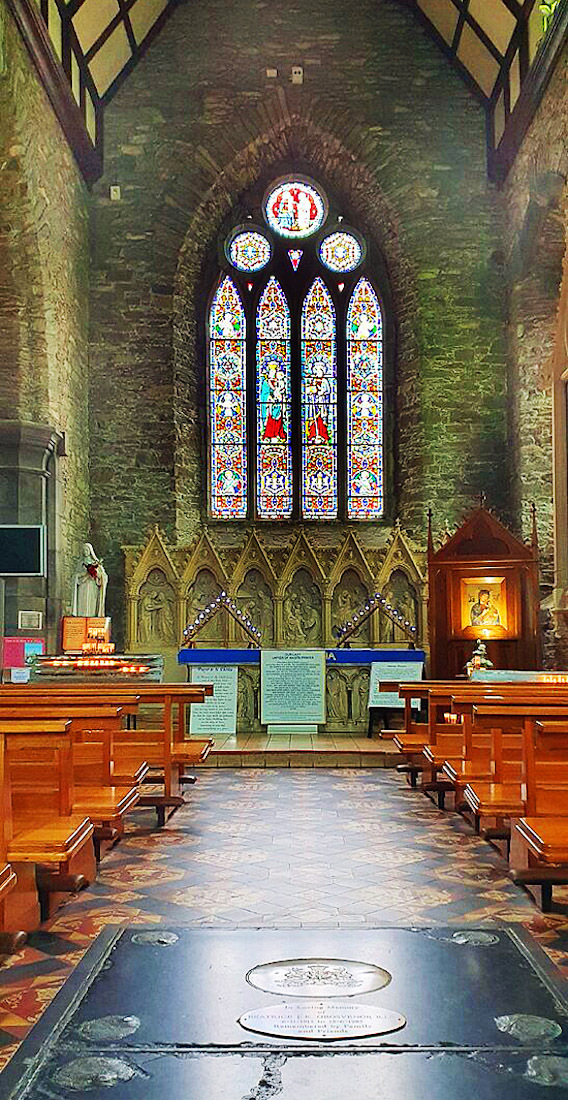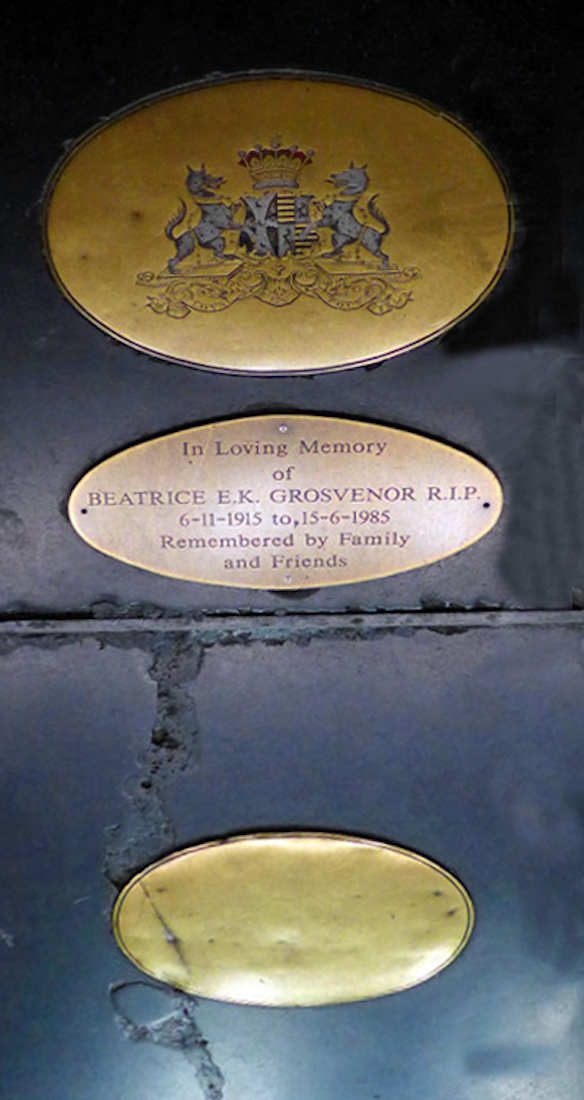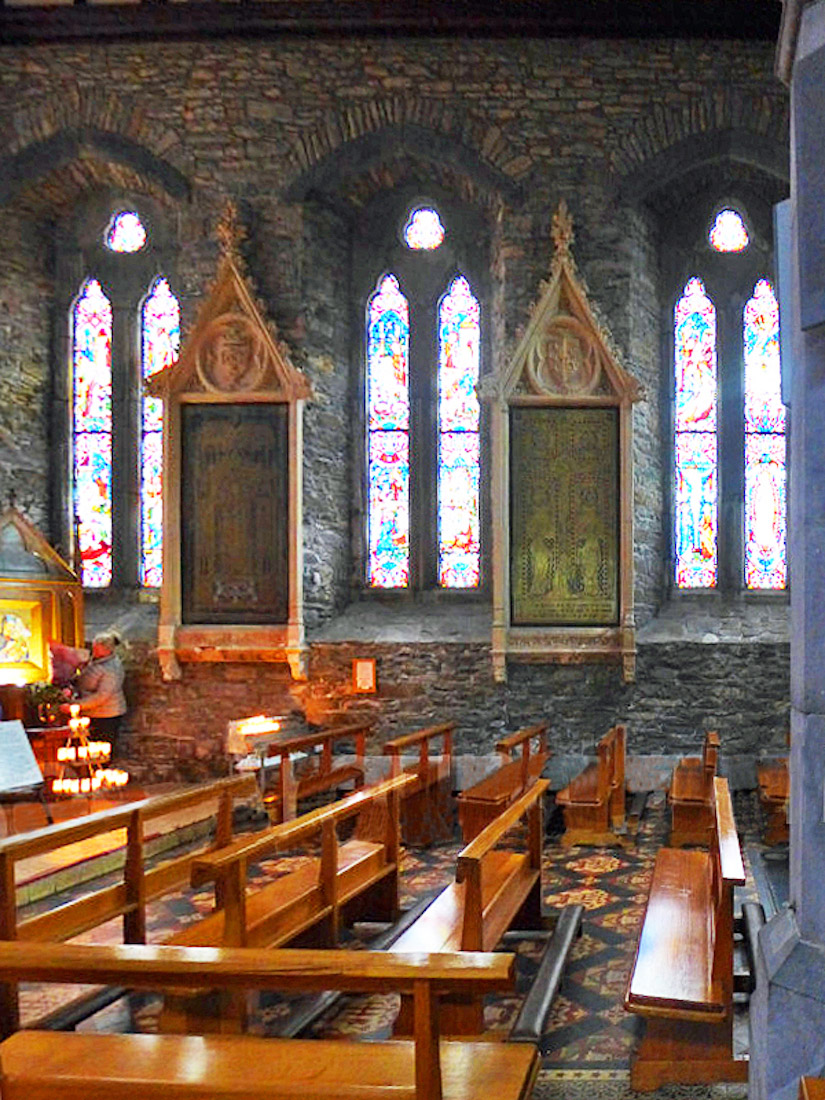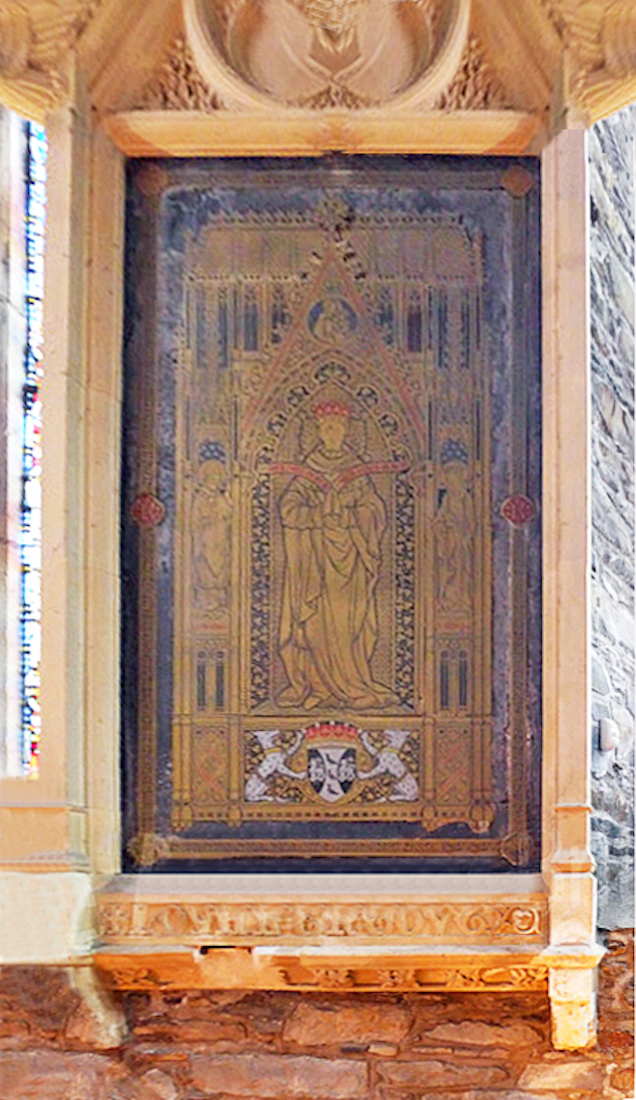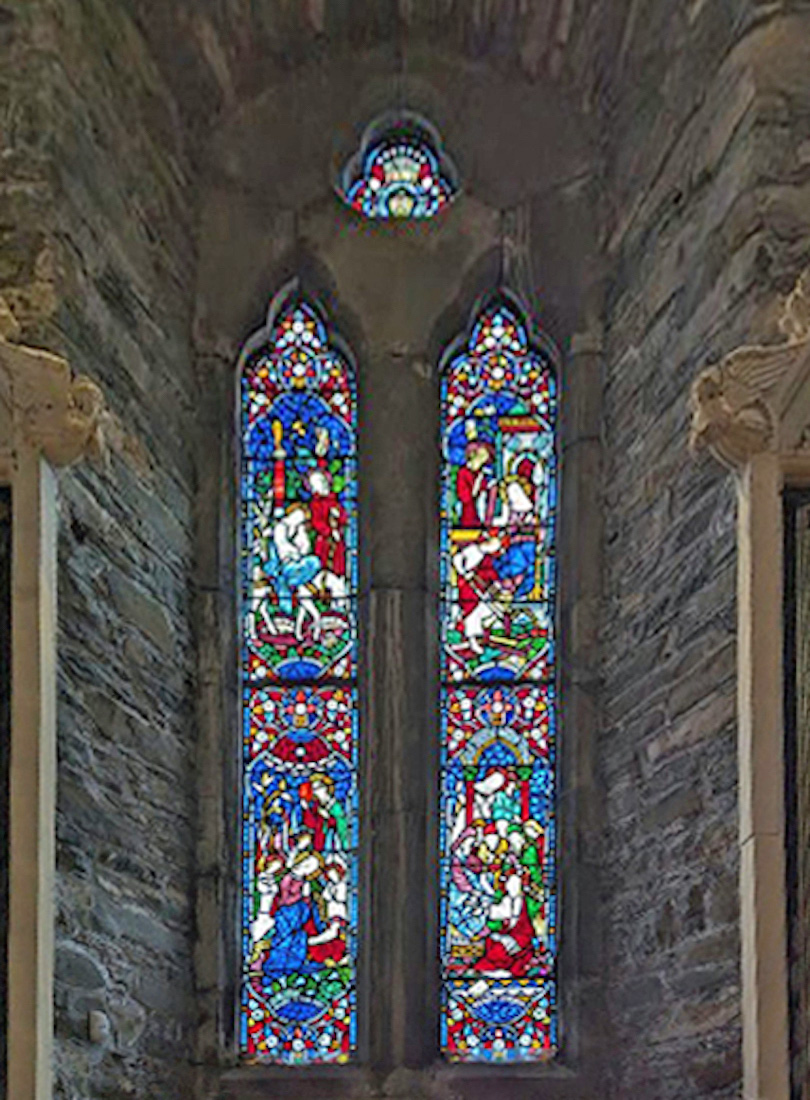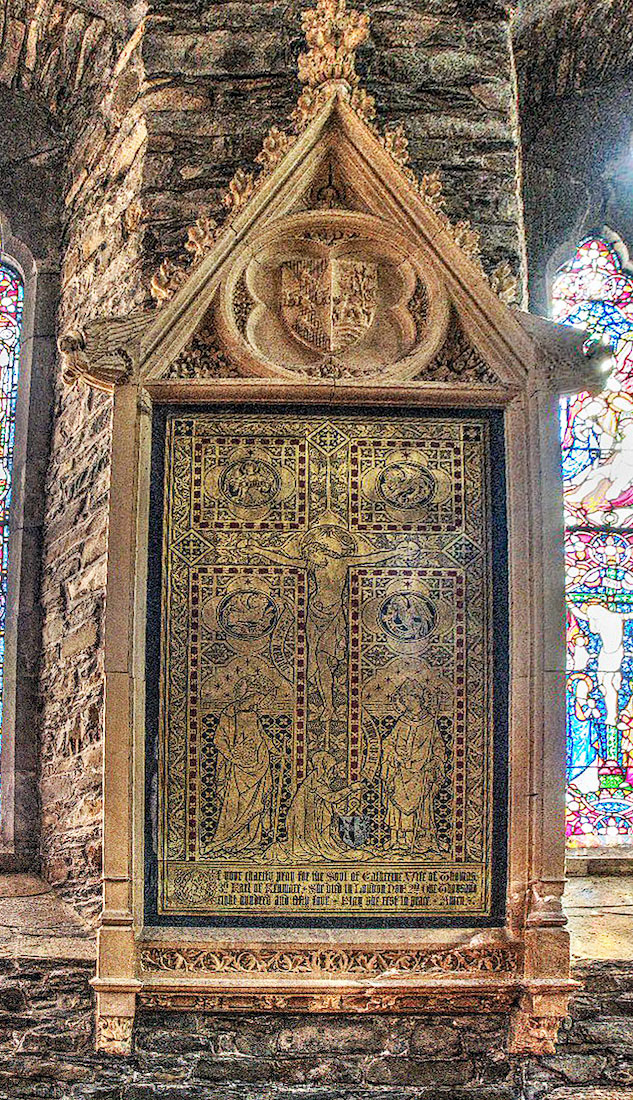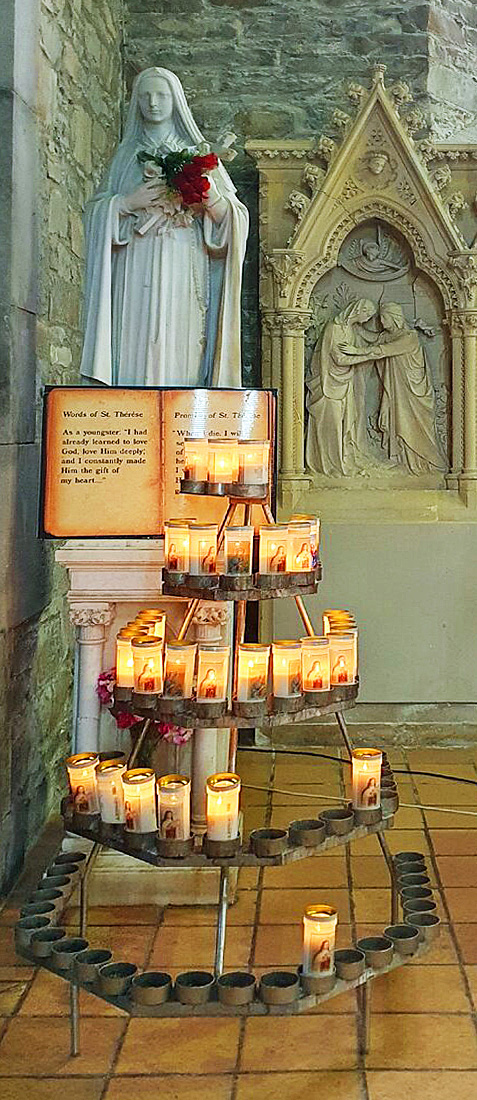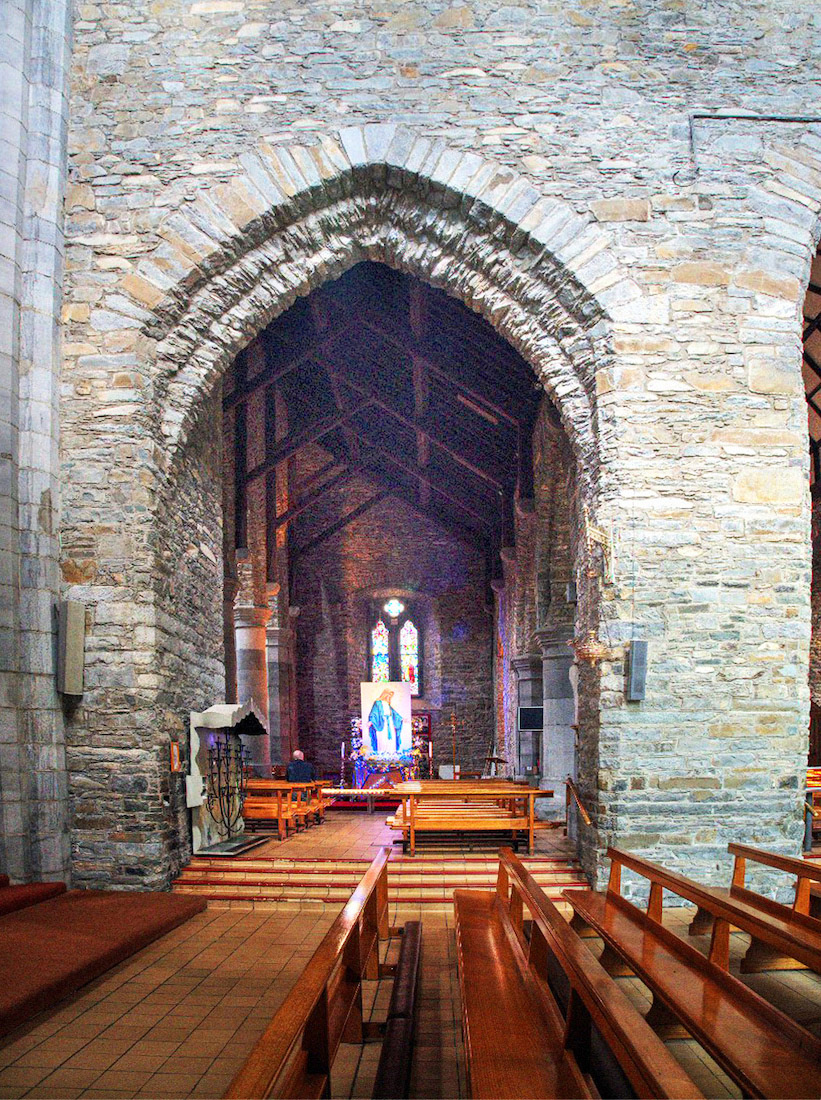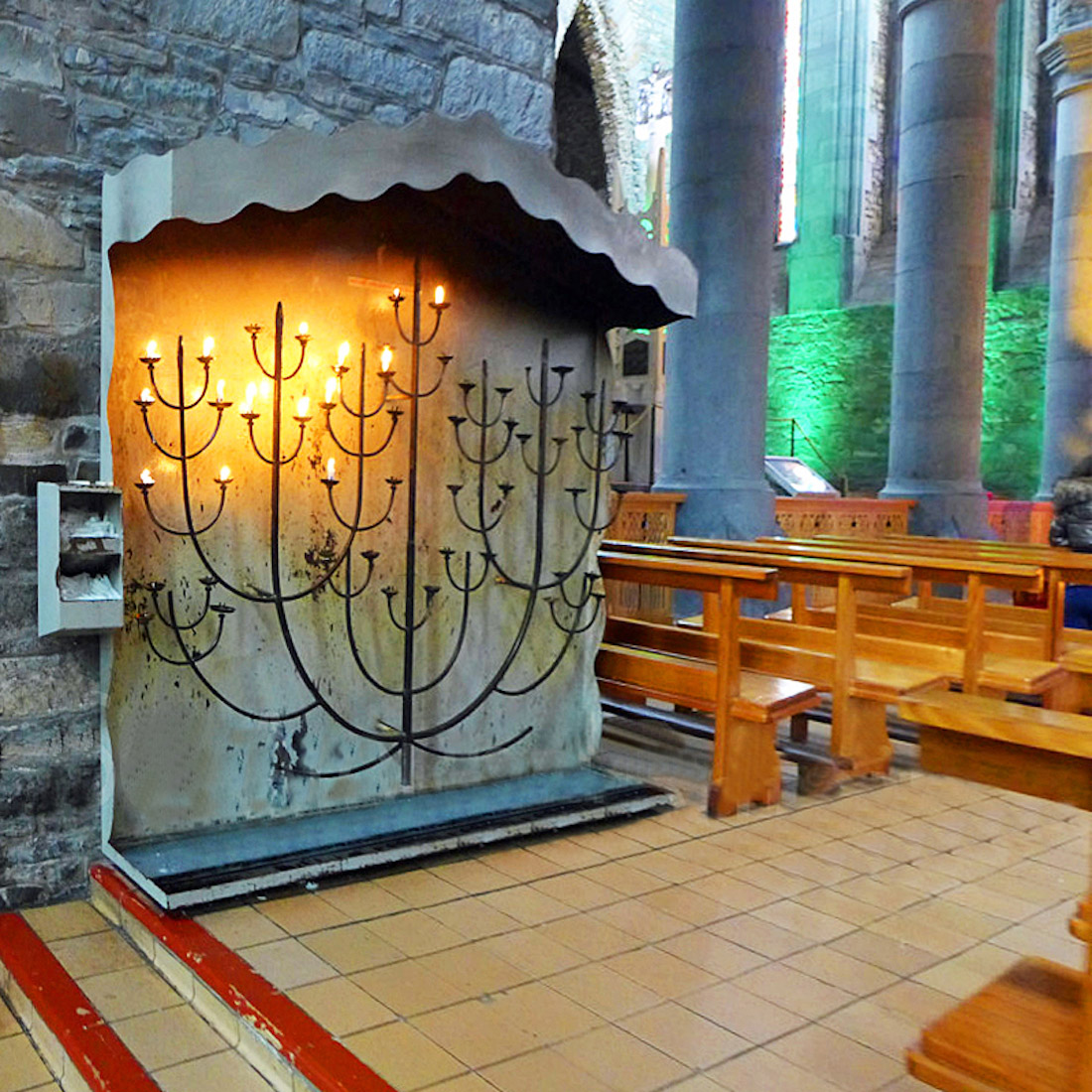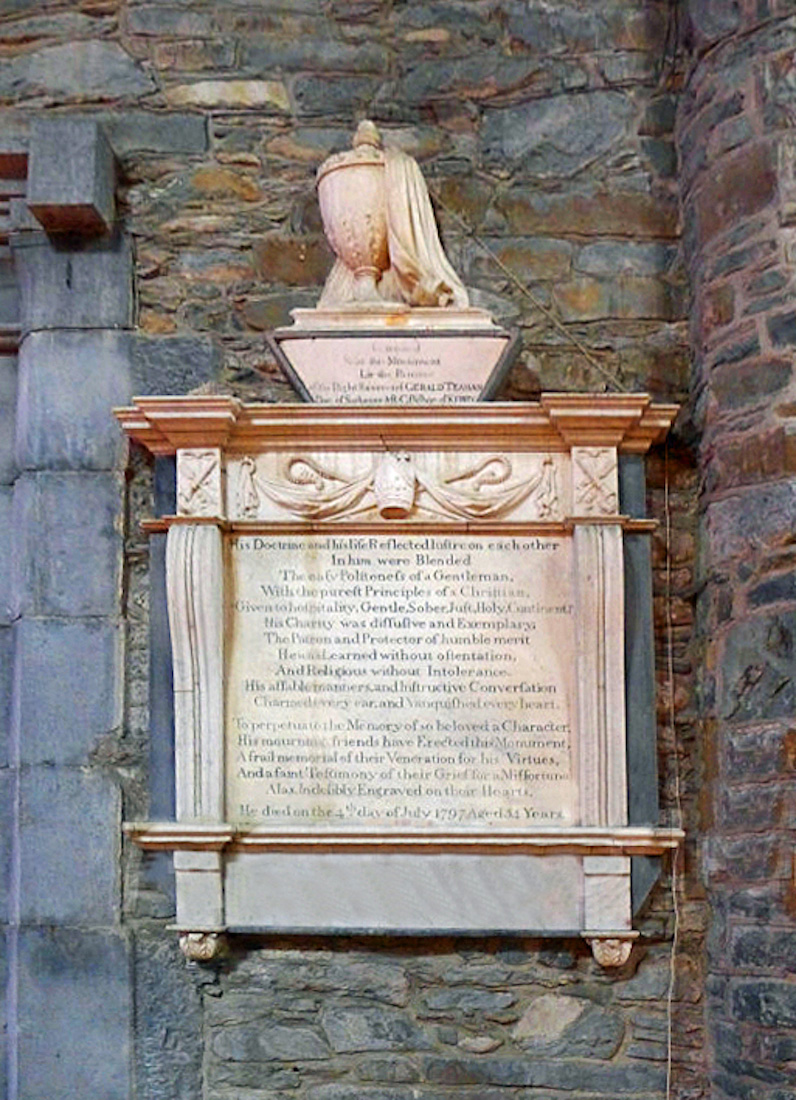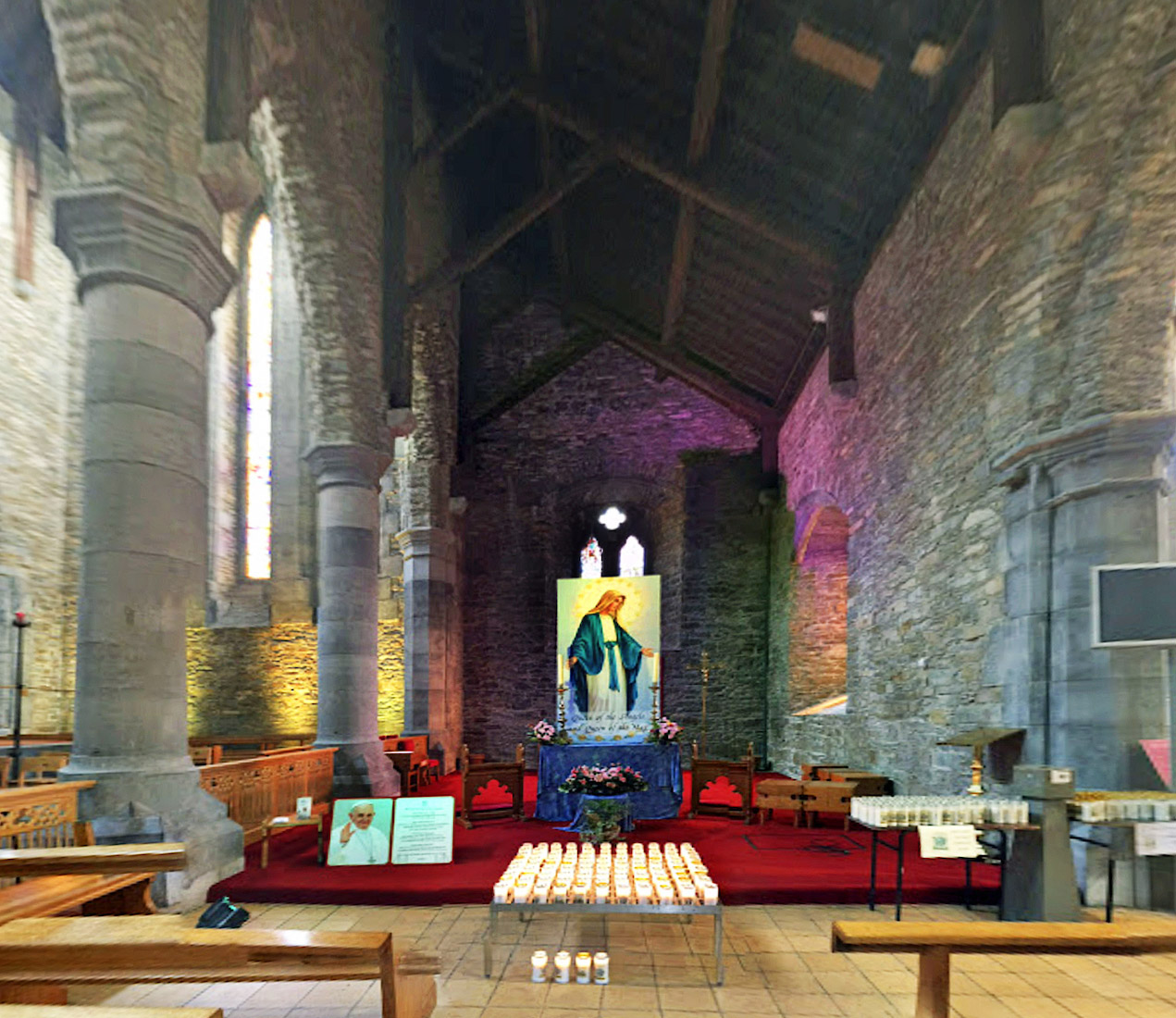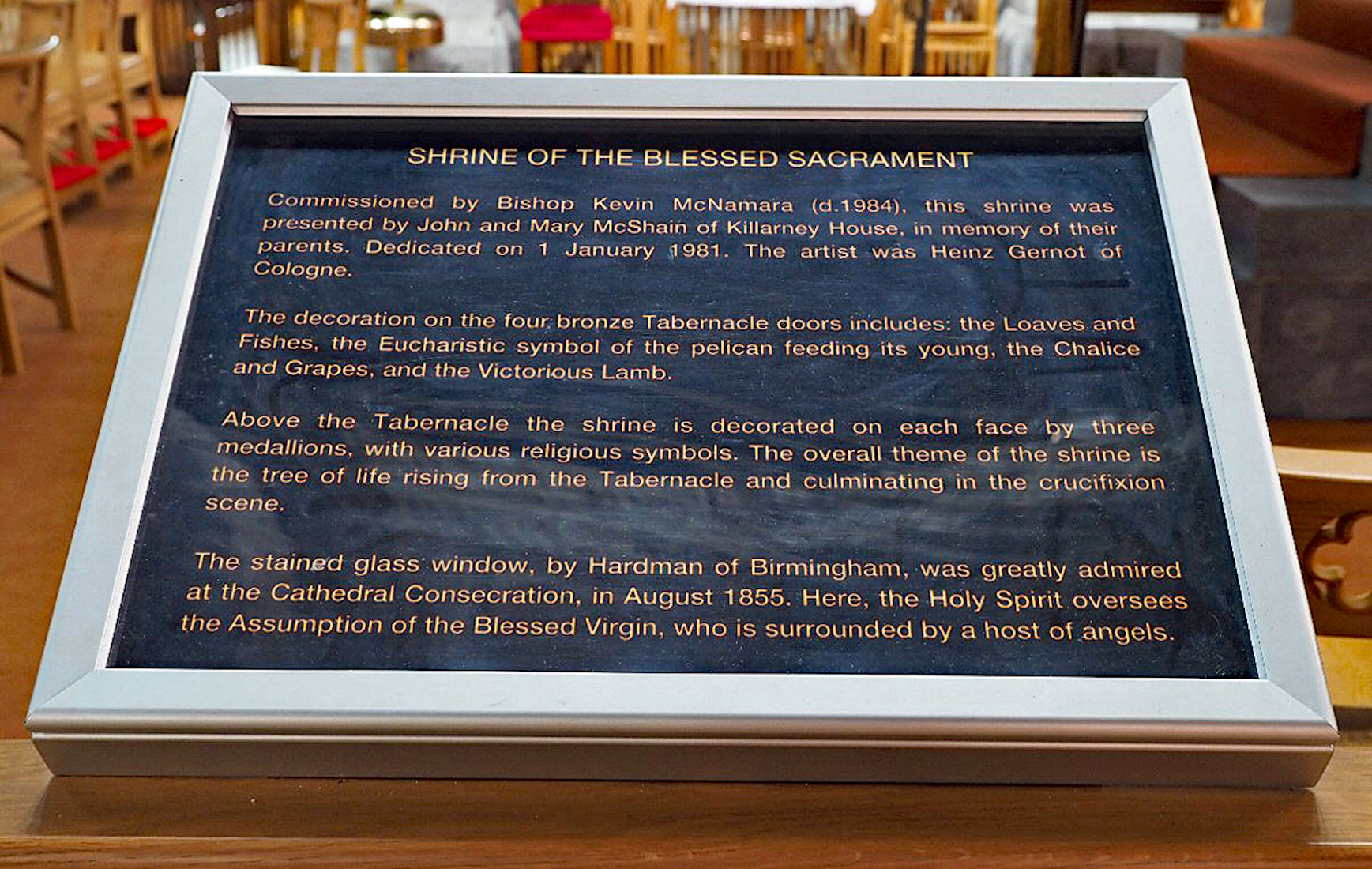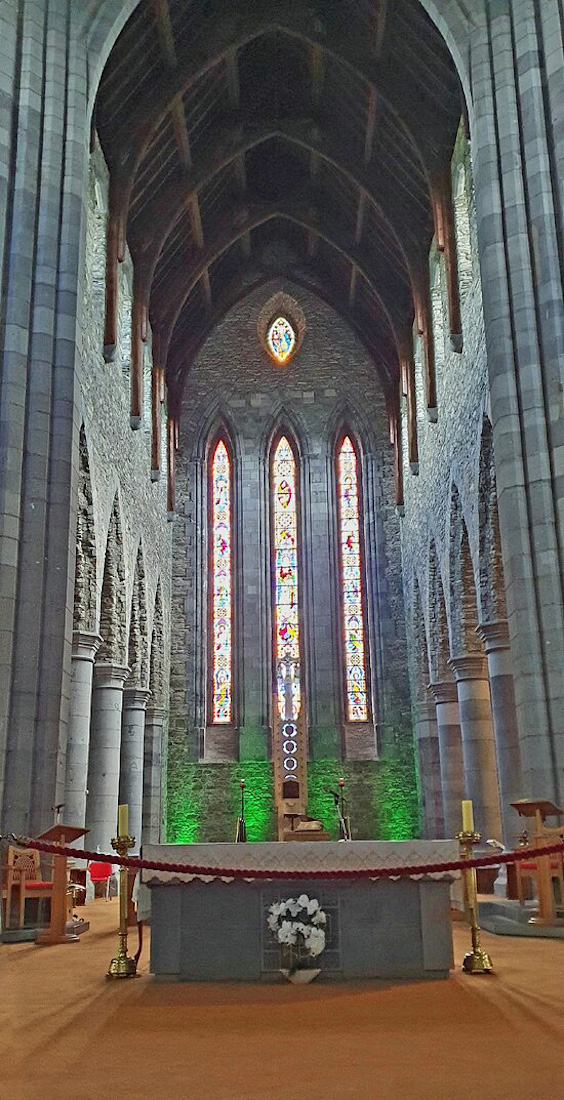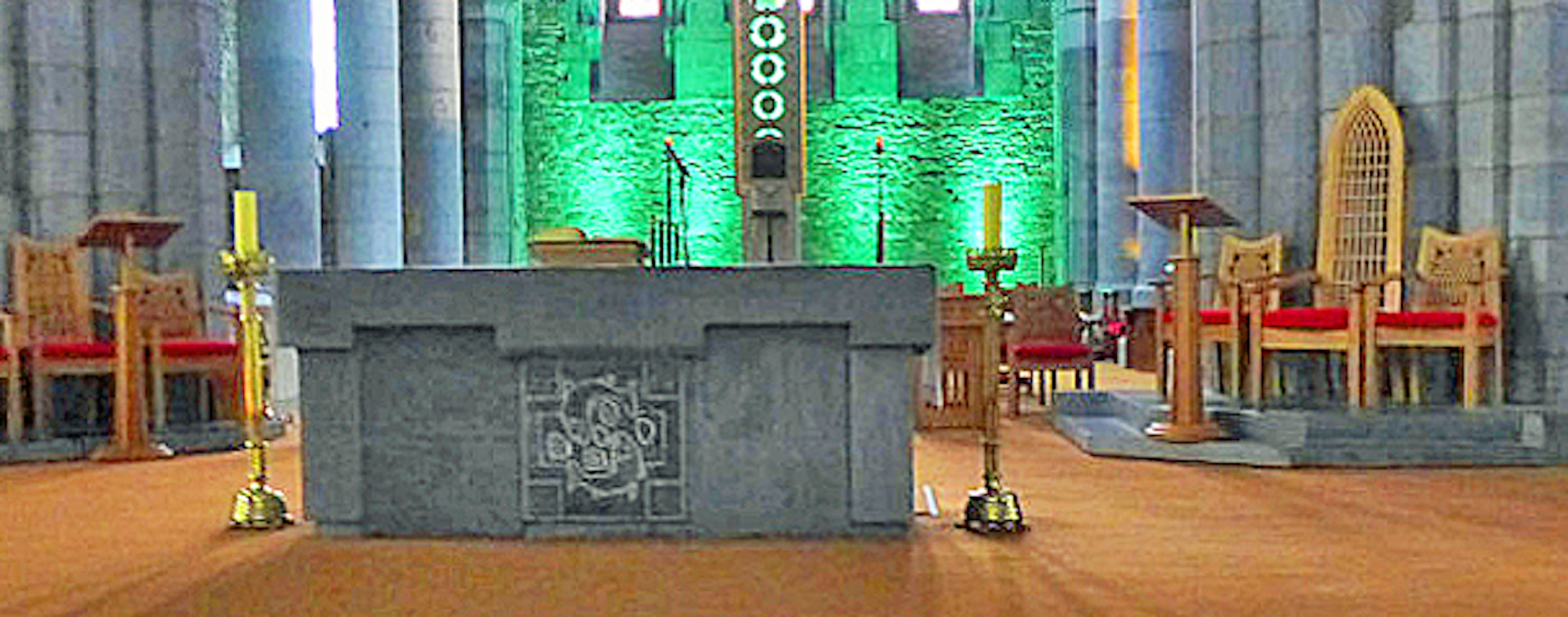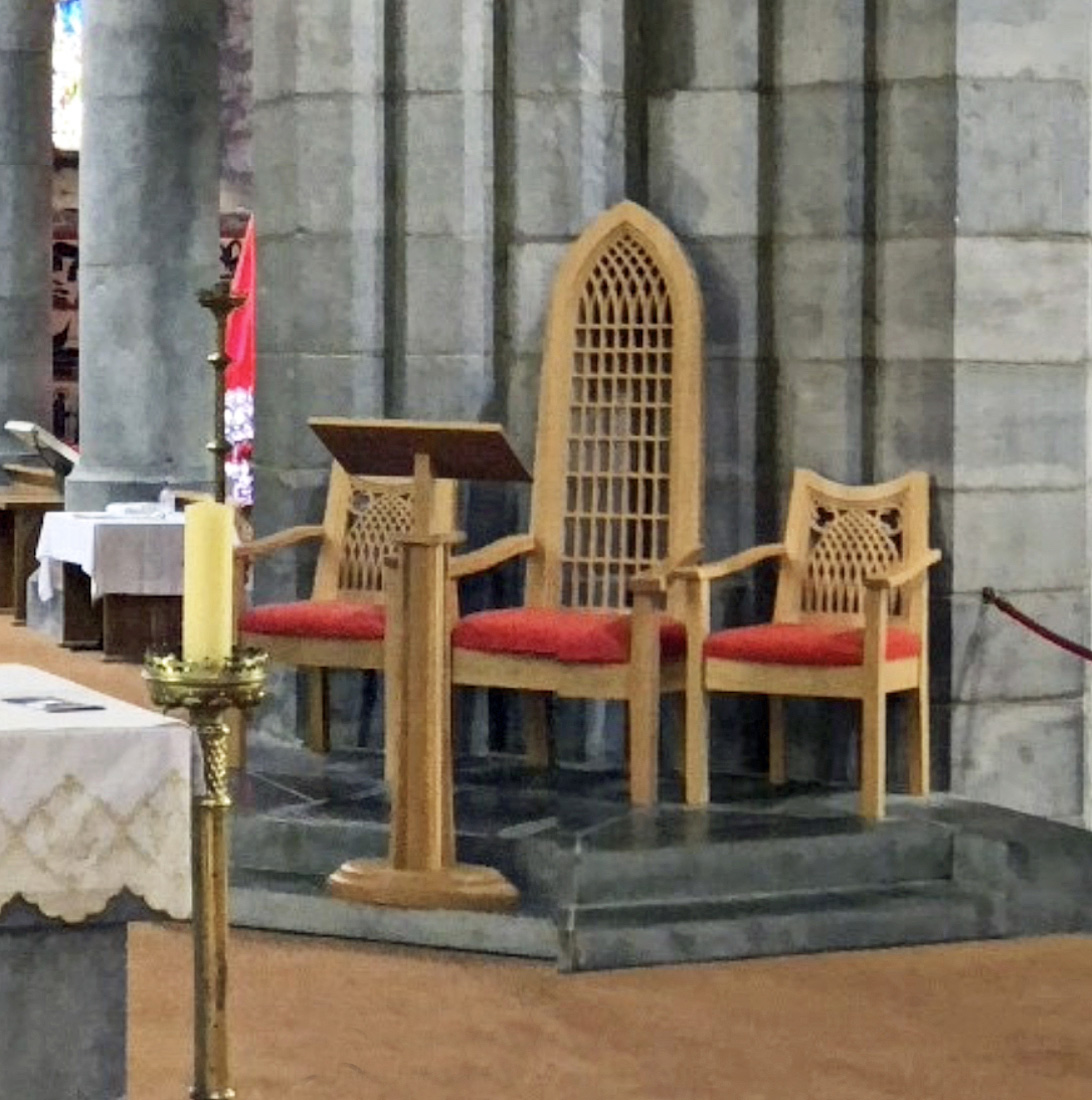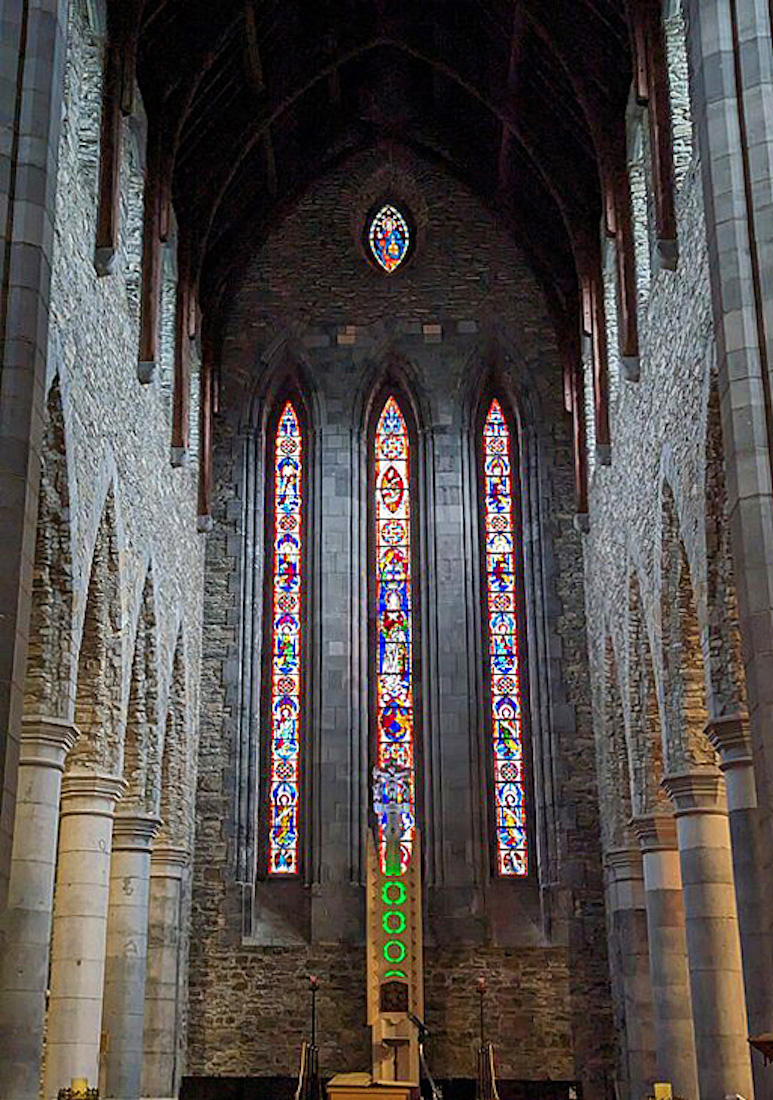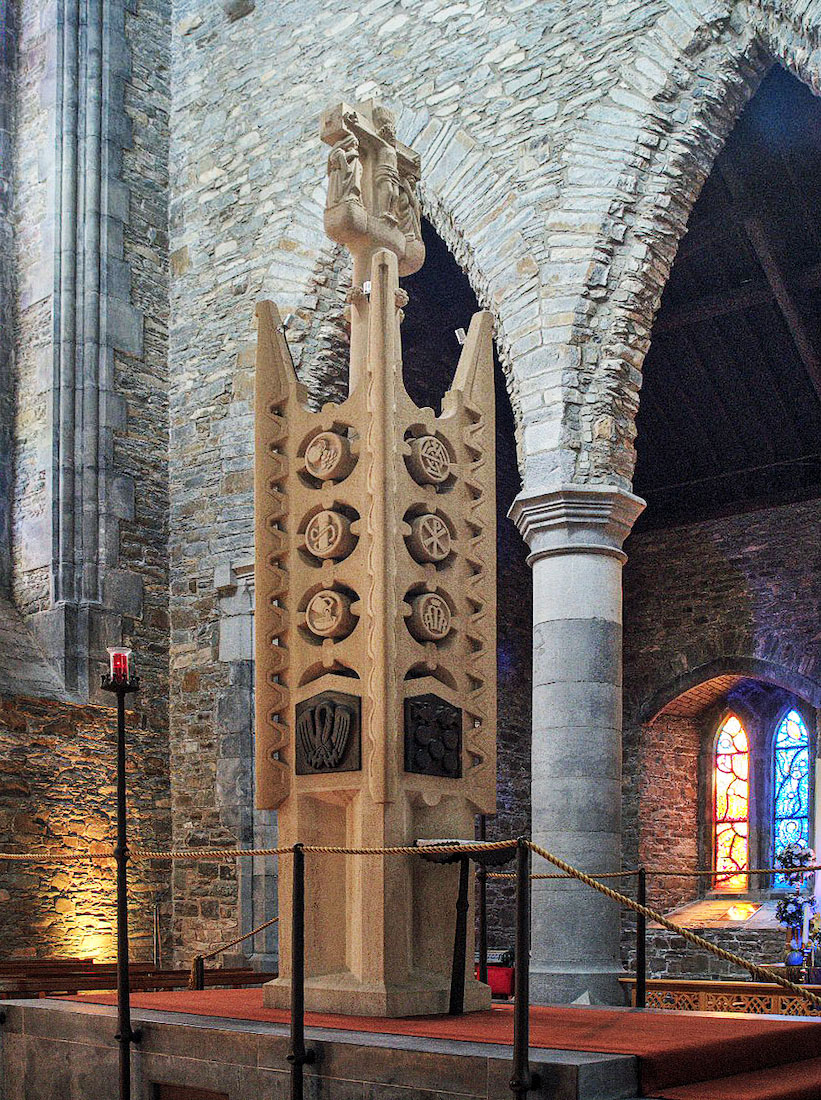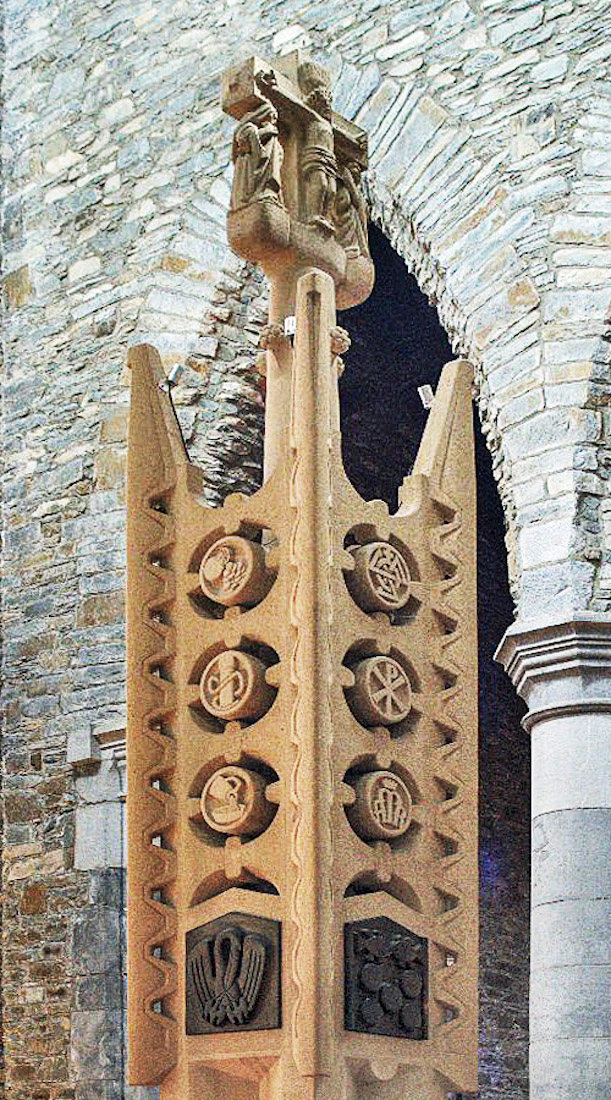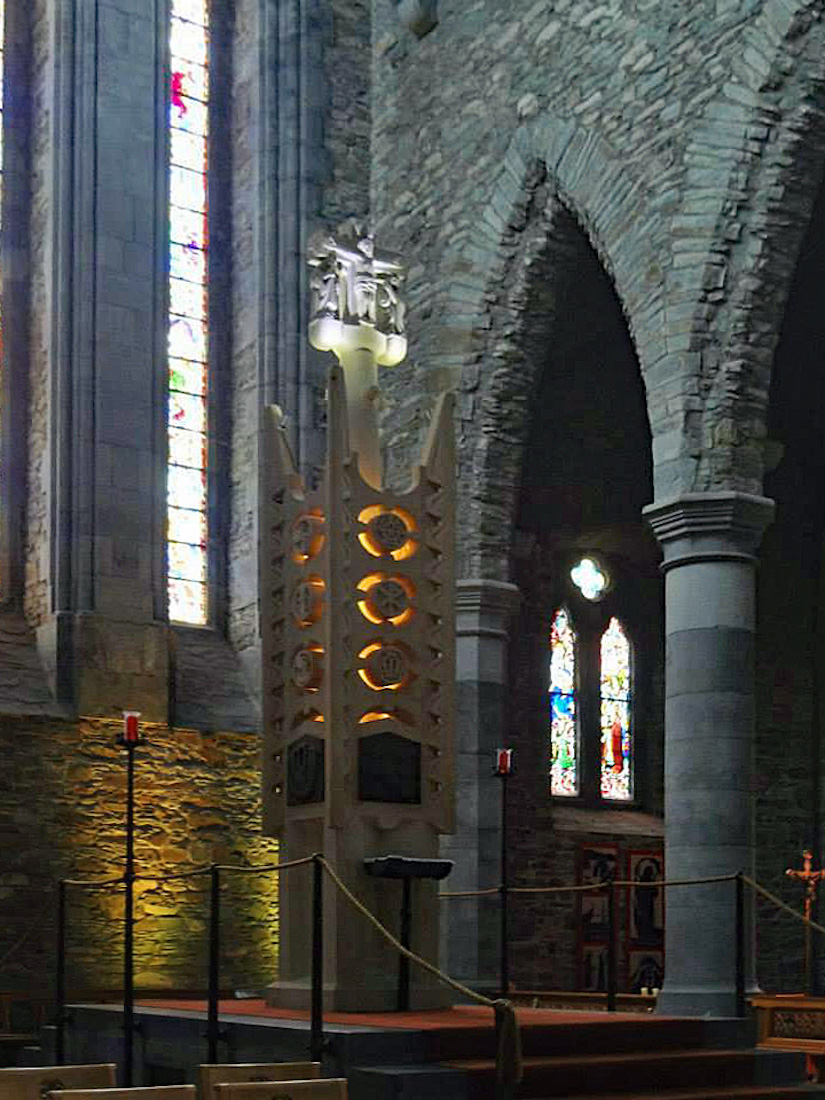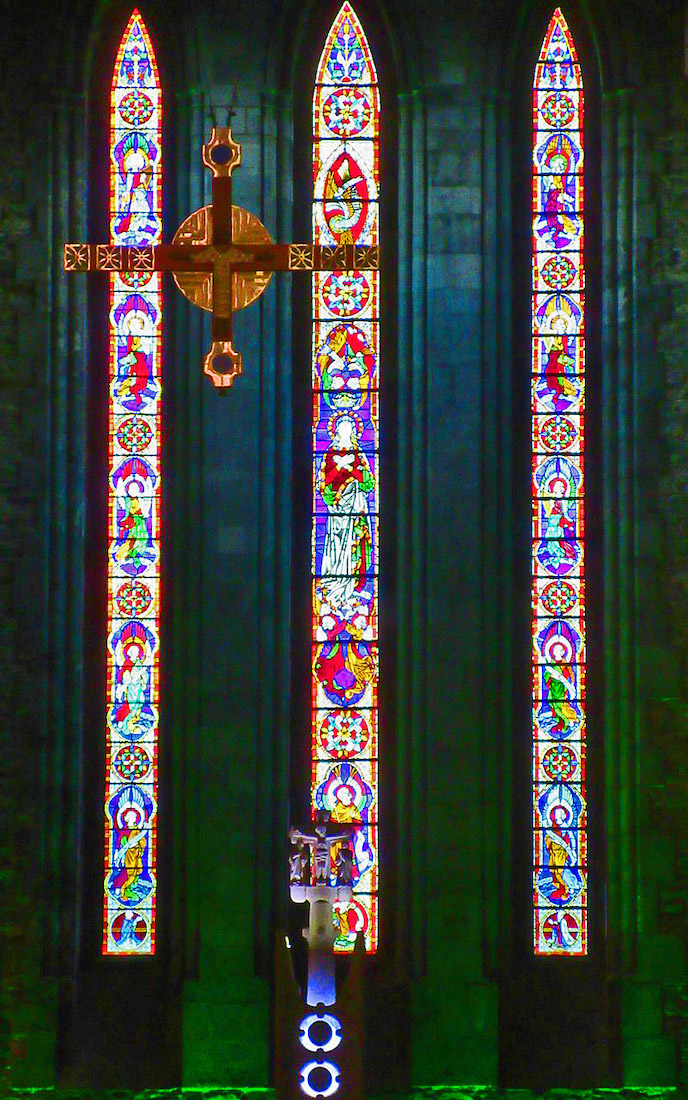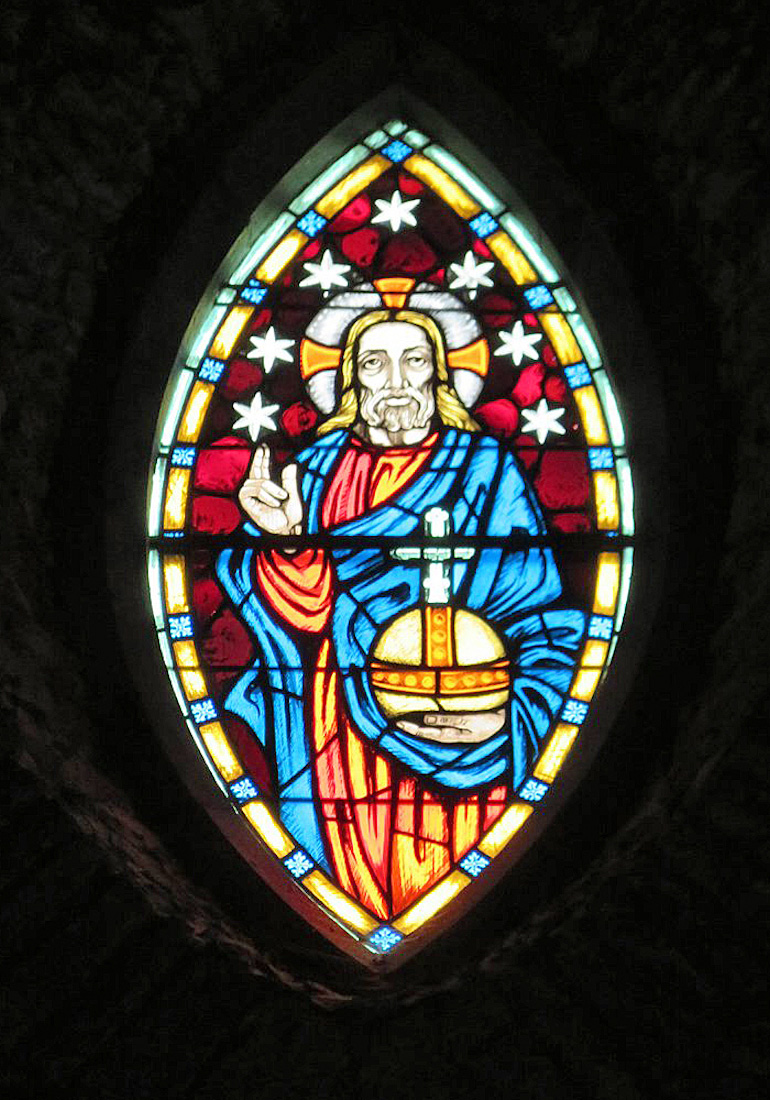G1. CHAPEL INFORMATION BOARD SAB
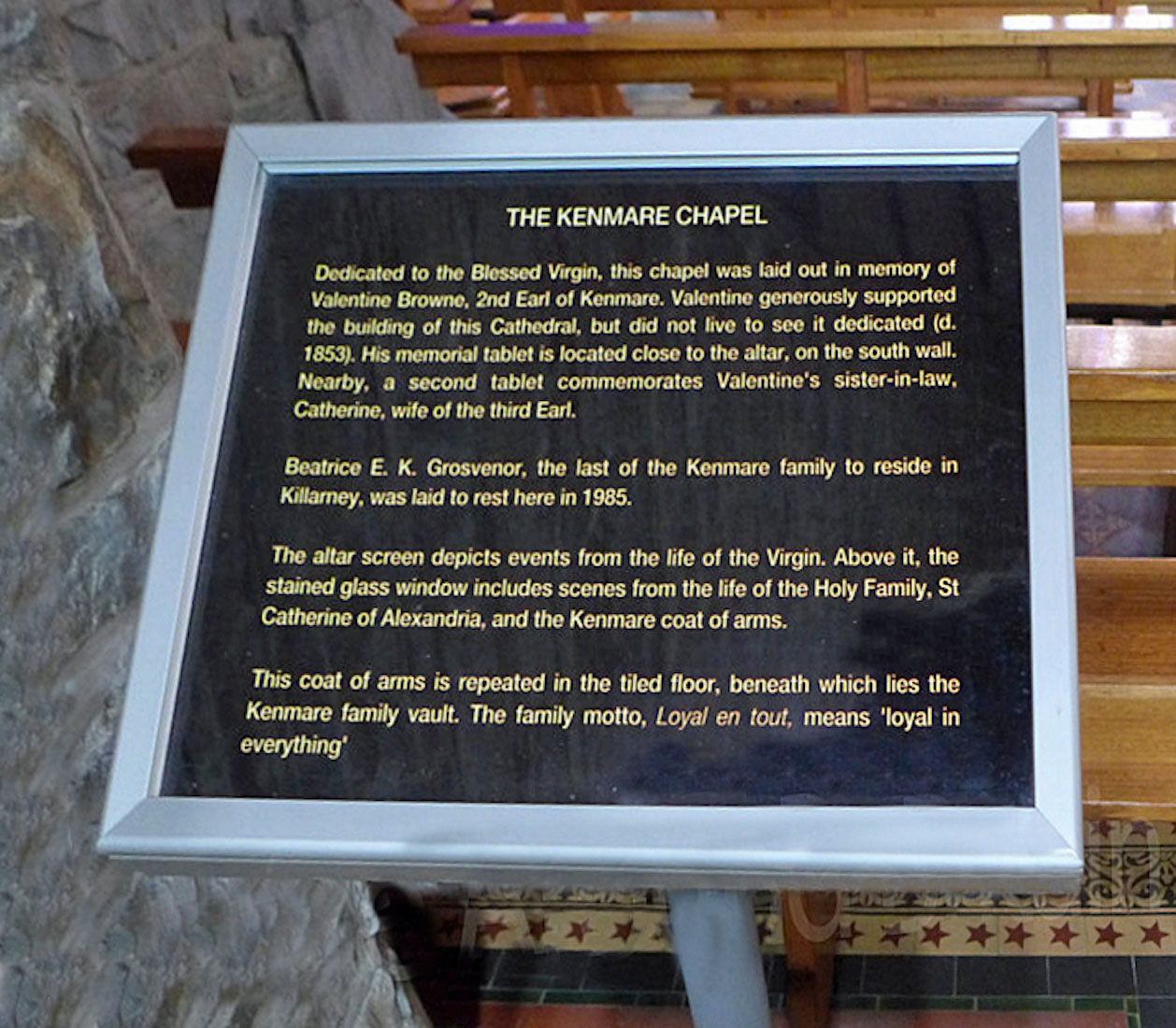
We explore the Lady Chapel, also called the Kenmare Chapel in memory of Valentine Browne, 2nd Earl of Kenmore, a generous supporter of the building of the Cathedral. INDEX
G2. THE CHAPEL TA SAB
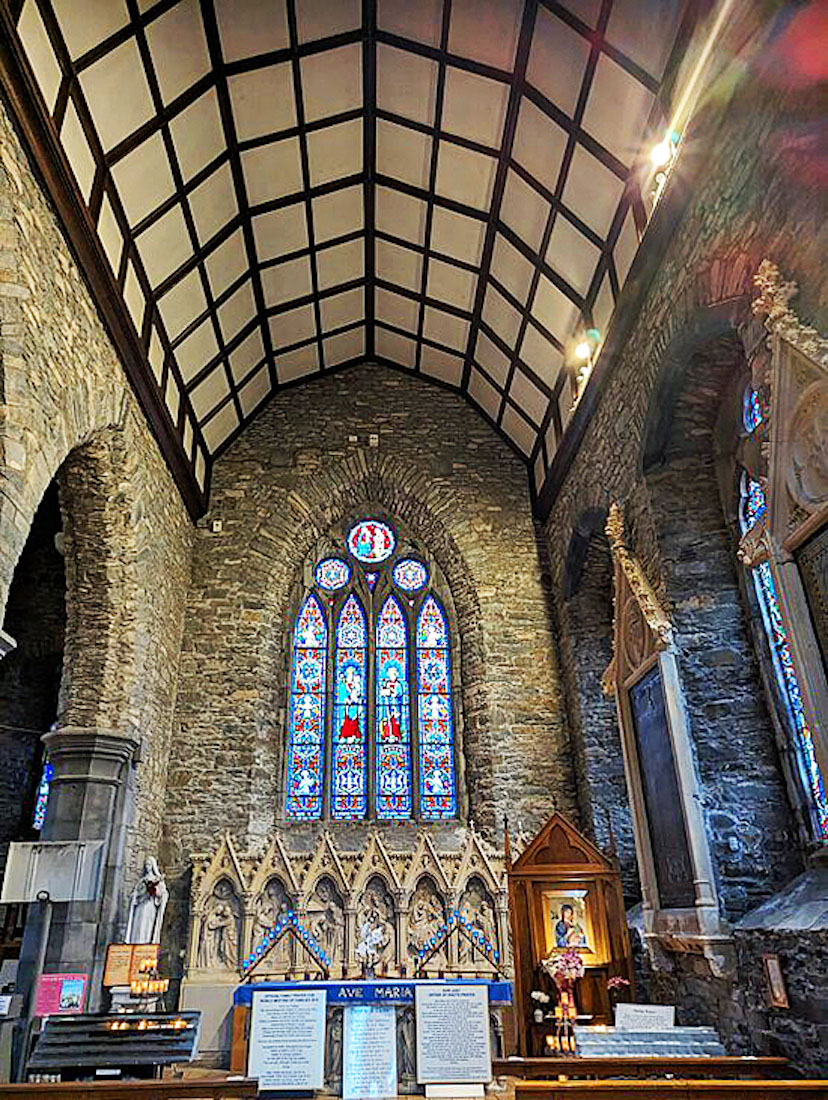
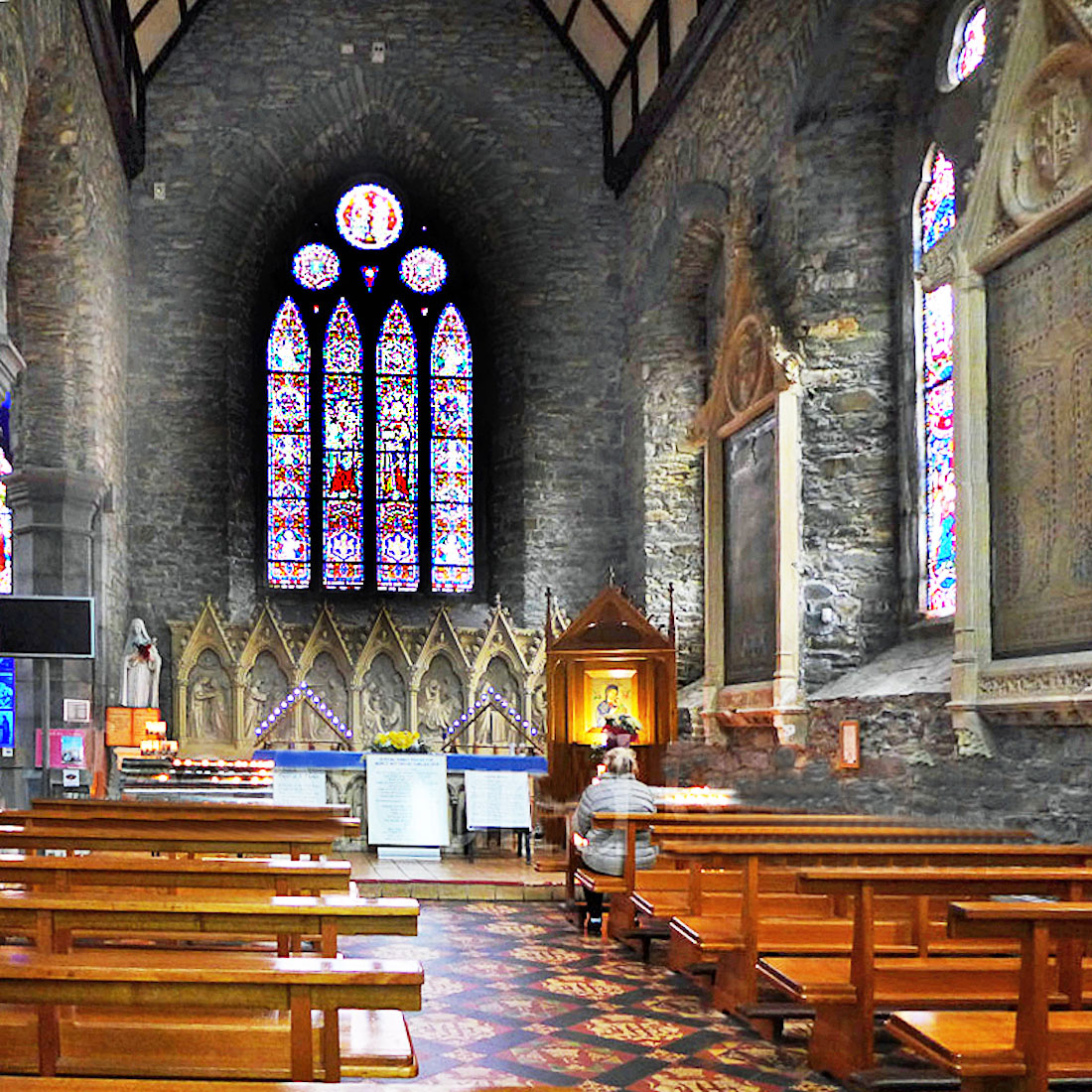
Ahead of us, a stained glass window rises up above the altar with its low reredos. The left side of the chapel is made of open arches, giving views across to the chancel. The right side of the chapel is an outer Cathedral wall with three stained glass windows and large memorials between. [Photo1 Credit: TA Jim S]
G3. GROSVENOR MEMORIAL TA SAB
On the floor in the Lady Chapel is a memorial to Beatrice Grosvenor (1915 – 1985), remembered in her adopted home of Killarney as a towering pillar of the community who played a major role in the economic, cultural, social and religious life of the town. [Photo1 Credit: TA Jim W]
G4. SOUTH WALL SAB
Looking across at the South wall of the Chapel we see the stained glass windows with the brass plaques between.
G5. SOUTH WALL DETAILS
We can obtain a small amount of information from these close-ups. The brass at left is a memorial to the Kenmare family, as can be seen in the Kenmare family coat of arms at the bottom. The brass at right is obviously a depiction of the crucifixion. [Photo2 Credit: TA Jim S]
G6. CHAPEL ALTAR CD
At front is the altar with a screen behind depicting scenes from the life of the Virgin. At left is a statue of St Thérèse of Lisieux, at right a painting of Our Lady of Perpetual Sorrow (Help, Succour). Across the front face of the altar are Seven Angels – probably Michael, Gabriel, Uriel, Chamuel (Camael), Raphael, Jophiel, and Zadkiel.
G7. CHAPEL EAST WINDOW CD
This is the East window of the Lady Chapel. The information board tells us that it contains scenes from the life of the Holy Family, St Catherine of Alexandria, and the Kenmare coat of arms. There is obviously a Nativity scene at top. The Kenmare coats of arms are shown at the bottom. At centre left is a depiction of the crowned Mary and Jesus, and Catherine of Alexandra appears at right, identified by her ‘Catherine wheel’.
G8. ST THÉRÈSE TA
Therese of Lisieux OCD (1873 – 1897) was born Marie Françoise-Thérèse Martin. Her religious name was Therese of the Child Jesus and the Holy Face. She was a French Discalced Carmelite who is widely venerated in modern times. She is popularly known in English as the Little Flower of Jesus, or simply the Little Flower. She is remembered for the simplicity and practicality of her approach to the spiritual life. [Photo Credit: TA Jim W]
H. BLESSED SACRAMENT CHAPEL
H1. LOOKING TO THE CHAPEL CD
The Blessed Sacrament Chapel lies between the Lady Chapel and the chancel. This view is from the pews of the South transept. We see that entering the Chapel we pass a large menorah at left. On the pillar opposite the menorah we can just catch a glimpse of the large white memorial we saw earlier (#S5).
H2. MENORAH GSV
The menorah is a multi-branched candelabra used in the religious rituals of Judaism, that has been an important symbol in both ancient and modern Israel. However, the menorah has also been employed as a liturgical object used during the rituals held in many churches and cathedrals. It is unclear how this menorah came to be in St Mary’s. [Photo Credit: GSV Marcin Gąsior]
H3. MEMORIAL SAB
The memorial is to Bishop Gerald Teahon who lived 1753 – 1797. Dr. Teahon was Bishop of Kerry, and was the first Bishop to live in Killarney. He and Thomas, the 4th Viscount Kenmare built the central portion of the old Bishop’s Palace for him. It eventually proved to be too small for the Bishop and his curates and a public subscription among the gentry enabled two projecting wings to be built.
H4. CHAPEL ALTAR SAB
The altar area of the Blessed Sacrament Chapel seems to be used for many different displays – no two pictures of it appear the same! The Chapel has an East window, but as here, it is usually hidden.
H5. CHAPEL INFORMATION BOARD CD
Along the left side of the Chapel we find another useful information board. However, the information is not about the Chapel, but about the adjacent sanctuary area.
H6. CHAPEL SOUTH WINDOW CD
Just to the right (South) of the altar in this Chapel are a colourful pair of stained glass lancets. Entitled Dawn and Dusk, these were created by Tighe O'Donoghue/Ross and installed in July 2013. They commemorate his family and his Rapparee ancestors (Irish guerrilla fighters!).
J2. ALTAR, CATHEDRA SAB
To the right of the altar and still within the crossing, is a set of three chairs. The central chair is the Bishop’s throne, or cathedra.
J3. CATHEDRA GSV
As Bishop’s thrones go, this is a very humble cathedra! The word ‘cathedra’ means ‘seat’ in Latin, and it is from this word that the cathedral gets its name: the church in which the cathedra is located.
J4. SANCTUARY TA
The sanctuary area of St Mary’s is remarkably uncluttered, featuring only a large and unusual tabernacle shrine with the high East window behind it. The tabernacle was dedicated in 1981, and created by Heinz Gernot of Cologne. It was presented by John and Mary McShain of Killarney House, in memory of their parents. [Photo Credit: TA Jim S]
J5. TABERNACLE SHRINE CD CD
The lower tabernacle has four bronze doors, each with a decoration: the loaves and fishes, the Eucharistic symbol of the pelican feeding its young., the chalice and grapes, and the victorious Lamb. Above the tabernacle the shrine is decorated on each face with three medallions carrying various religious symbols. The overall theme of the shrine is the tree of life rising from the tabernacle and culminating in the crucifixion scene.
J6. SHRINE AT NIGHT TA
At night the tabernacle shrine is lit from within. [Photo Credit: TA AleyPablo]
J7. EAST WINDOW TA
The stained glass window is by Hardman of Birmingham, and was consecrated in 1855. It shows the Holy Spirit overseeing the Assumption of the Blessed Virgin who is surrounded by a host of angels. [Photo Credit: TA CultureVulture]
J8. TOP EAST MANDORLA TA
High above the Eastern lancets is a mandorla – an almond shaped frame, containing an image of the Risen Christ. This completes our investigation of St Mary’s Cathedral. [Photo Credit: TA W49]
CONCLUSION
I hope you have enjoyed visiting Killarney Cathedral with me. I have had great pleasure in creating the website, although in some ways it has been difficult. Some suitable photos have not been easy to find, and there are places where information is lacking. I would be very happy to receive any corrections, comments, or extra material which might be included on this site.
As mentioned earlier in the Index, none of the photos on this site are mine, but have been obtained from various sources. These are listed below:
• Chris Droffats (Stafford) [CD] Chris was the initial inspiration for this site, and I am grateful to him for the use of his photos
His collection of photos can be found at [To be added]:
.
• A selection of photos has been drawn from the public domain selection in Wikimedia and Geograph. These have been individually acknowledged in the text.
• A small number of photos come from Google Street View. [GSV]. A note of the photographer has been made where this is available.
• A few photos come from the website See Around Britain [SAB]. This is an interesting and helpful website, particularly designed to help travellers with some handicap. I appreciate receiving permission given to use these photos. The link is:
https://seearoundbritain.com/venues/st-marys-cathedral-killarney-county-kerry
• A larger number of photos come from Trip Advisor [TA]: in each case the photographer’s name has been given. I am very conscious of copyright, but can see no way to ask each Trip Advisor photographer for permission. I hope you might be delighted to see your photos used to promote St Mary’s, but I have no wish to cause offence. If there is a problem, please contact me at the email address below. The Trip Advisor link for Killarney Cathedral is given here.
The text input has come from various sources, and is used with thanks. I also greatly appreciate the work of my wife Margaret who proof-reads the text of all my websites.
Site created 08 / 2024
Paul Scott

TA Belinda I


